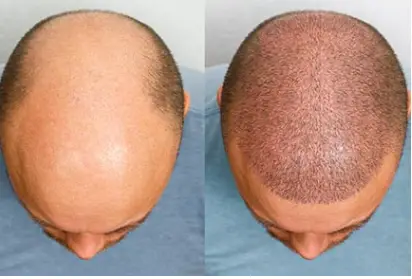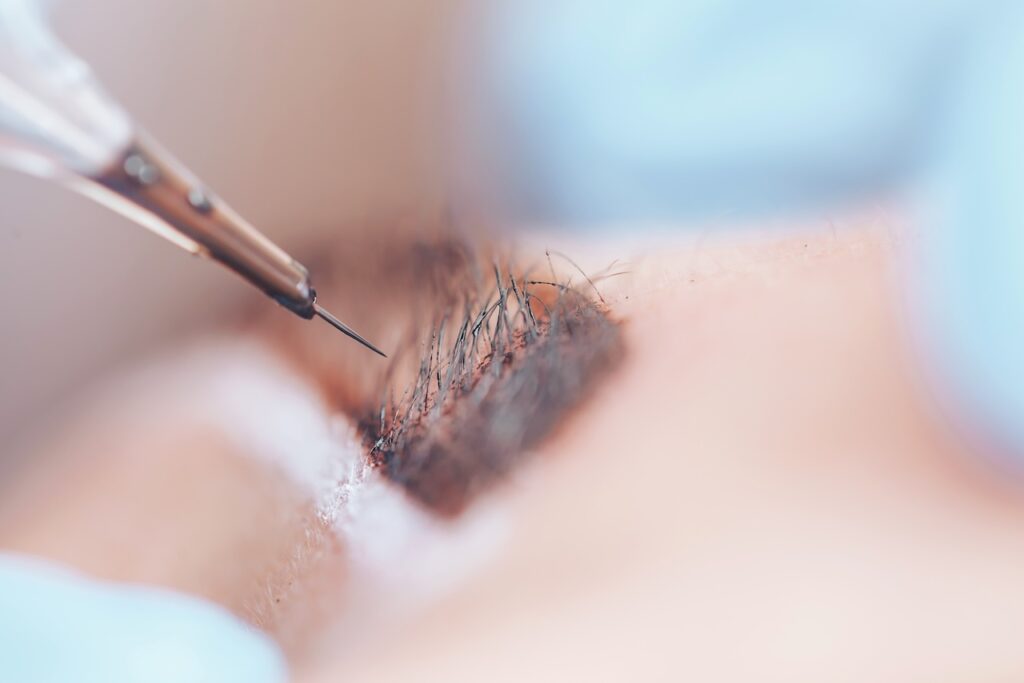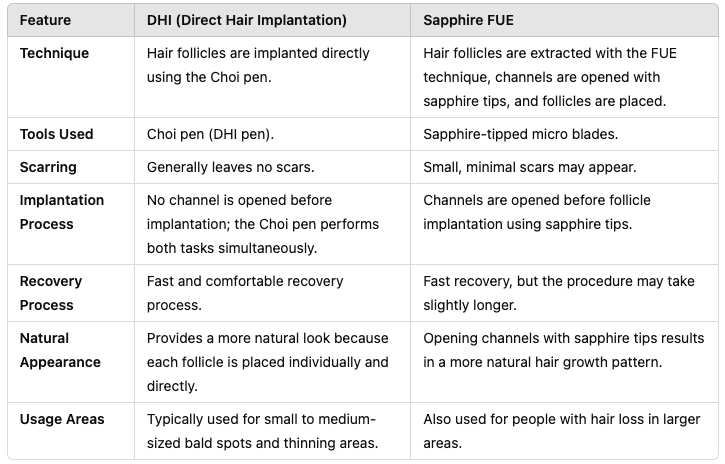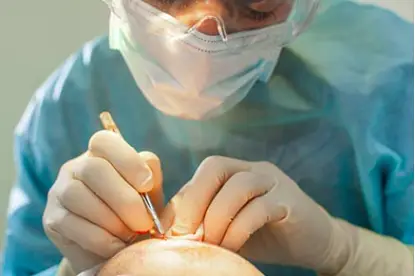
Hair transplantation is a natural and effective medical solution for addressing partial or total hair loss.
Using the advanced technique such as DHI (Direct Hair Implantation) or FUE (Follicular Unit Extraction), individual grafts are meticulously transplanted to areas affected by hair loss or scarring. It involves transferring hair follicles from a part of the body where hair is abundant (called the donor area) to areas with little or no hair (called the recipient area). Most commonly, the donor area is the back or sides of the scalp, as these regions are typically resistant to hair loss.
The procedure typically takes 4-8 hours and is performed under local anesthesia, ensuring a painless experience. In the initial stage, healthy grafts are carefully harvested from the back of the head, between the ears—an area genetically resistant to shedding. These grafts are then precisely implanted into the newly prepared canals. Once transplanted, the hair grows naturally in the new area. The results are typically permanent, as the transplanted follicles are genetically resistant to hair loss
In the first 4-6 weeks following the procedure, the transplanted grafts will shed. Around three months later, new hair begins to grow, thickening over the next 6-8 months. By the end of one year, the final results will be fully visible.
Hair transplantation can be performed at any time of the year, making it a flexible option for those seeking to restore their hair.
In hair transplantation, there are two popular methods: DHI (Direct Hair Implantation) and Sapphire FUE. Both methods aim to implant hair follicles naturally, but they differ in terms of the techniques used and the tools involved. Here are the definitions of DHI and Sapphire FUE methods and their differences:

What is the DHI Method?:
DHI (Direct Hair Implantation) is a technique based on the FUE (Follicular Unit Extraction) method, which performs the hair transplant procedure with greater precision. In this method, hair follicles are extracted one by one and implanted directly into the scalp using a special tool called the DHI pen (or Choi pen).
Features of the DHI Method:
Advantages of DHI:
What is the Sapphire FUE Method?
Sapphire FUE (Follicular Unit Extraction) is an improved version of the classic FUE method. In this technique, hair follicles are still extracted one by one, but the process is made more precise and effective with the use of sapphire-tipped micro blades during the implantation phase.
Features of the Sapphire FUE Method:
Advantages of Sapphire FUE:

DHI Method:
This method can be preferred if hair transplantation is needed for small and sparse areas or when a highly precise procedure is required. Additionally, due to its less invasive nature and faster recovery process, it is a more comfortable option from an aesthetic perspective.
Sapphire FUE Method:
If hair transplantation is needed for larger areas and natural results are desired, Sapphire FUE is a better choice. Sapphire-tipped tools enable more efficient channel opening and cause less tissue damage, making it ideal for extensive hair loss.
Both methods deliver successful results and are modern techniques widely preferred in hair transplantation. While DHI offers quick results and high naturalness through its direct implantation method, Sapphire FUE provides more precise and aesthetic transplantation thanks to its sapphire-tipped tools.
The choice between these methods depends on factors such as the extent of hair loss, the size of the area to be treated, and personal preferences. Ultimately, the decision is tailored to the individual’s needs with the guidance of a doctor

A common concern among patients undergoing surgical procedures is the fear of pain or discomfort during the administration of anesthesia. Many patients researching FUE hair transplantation ask about the pain involved and the number of injections required.
In Hair transplantation, local anesthesia is used, numbing a specific area with medication administered beneath the skin. This ensures the procedure itself is pain-free. However, patients with needle phobia or concerns about discomfort during anesthesia often find this stage to be the most anxiety-inducing part of the operation.
To address these fears, advancements in local anesthesia techniques have been introduced in recent years, some of which promise a virtually painless experience.
Hair transplant procedures, which typically last 4-8 hours, local anesthesia is applied twice and takes about 15 minutes in total—first to the neck before graft extraction and then to the forehead before creating recipient canals. Patients report no pain after the anesthesia is administered.
One innovative approach to alleviate anxiety is needle-free anesthesia, now widely used in developed countries. This technique involves advanced devices that deliver anesthetic medication to the tissue by spraying it onto the skin with high air pressure. The medication spreads through the tissue via diffusion, blocking pain signals to the nerves.
This method reduces patient anxiety and simplifies the physician’s workflow during the procedure.It is important to note, however, that while needle-free anesthesia provides initial numbing, traditional needles are still required for tumescent anesthesia to ensure complete pain control during the procedure.


The newly implanted grafts will shed within the first 4-6 weeks. Around three months later, new hair will begin to grow, gradually thickening over 6-8 months. By the end of one year, the final results will be fully visible. Our experts will provide ongoing support after the procedure, offering personalized recommendations and remaining available to address any questions you may have. At Iconica, we are committed to ensuring 100% customer satisfaction and stand by our patients every step of the way.

Hair transplantation and other aesthetic procedures are performed by our expert teams on the scheduled date. During this process, our clinic is equipped with everything needed to ensure the patient’s comfort. The procedure typically lasts 4-7 hours, and with the application of local anesthesia, there is no pain experienced. In the initial stage, healthy grafts are carefully harvested from the back of the head, between the ears—an area genetically resistant to shedding. These grafts are then meticulously implanted into the newly prepared channels.

Patients arriving from abroad or other cities are welcomed with VIP transportation vehicles at Istanbul Airport. Based on the agreed schedule during the planning phase, from now on we will ensure all arrangements for your clinic visit, hotel stay, and return transfer to Istanbul Airport are seamlessly managed.

Once the decision is made, the operation plan and process are finalized, and the client is fully informed. Every step of the process is carefully managed by our experts. The patient provides their preferred dates, and our team arranges a suitable schedule, coordinating the clinic, experts, hotel availability, and airport transfers. Basically the client is only responsible for arranging their flight, while our team takes care of all other details.
Alternatively, clients may choose to manage their own arrangements and simply arrive at the clinic on the specified dates.

During our free consultation, our experts assess the patient’s needs and recommend the most effective solution. Throughout this process, clients will receive clear, transparent information, ensuring complete understanding. Our specialists will address any questions and provide detailed insights about the procedure. This stage is entirely free of charge.